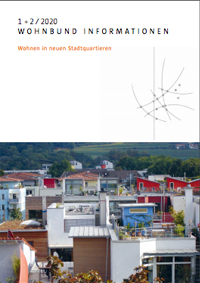The Federal City of Bonn was awarded the "StadtGrün naturnah" label on Thursday, 19 September 2019. With this award, the alliance "Municipalities for Biodiversity" honours exemplary commitment on urban green spaces to promote biodiversity. Bonn was able to score points in the labelling process with species-rich wildflower meadows, sustainable forest management and innovative environmental education offers and is now one of the few large cities certified with the silver label for more nature in the city.
The awarding of the label took place during the "StadtGrün naturnah" conference in Bonn, where around 100 participants from municipalities and authorities learned about the activities of the award-winning municipalities and exchanged views on the scope for action for more diversity in municipal green spaces. Dieter Fuchs, Head of the Office for Urban Greening of the City of Bonn, accepted the award together with his staff.
"Already today, near-natural, species-rich green spaces characterise Bonn's cityscape. The labelling process supports us on our way to further strengthen ecological green space management," says Fuchs. "Especially in large cities with growing populations like Bonn, it is important to continue to give nature space in the city. In the labelling process, intensive cooperation has been established with local partners who are committed to biodiversity. Together we want to inspire citizens for more nature in the city and invite everyone to contribute in their own way."
In the multi-stage labelling process, the participating municipalities were closely accompanied by the project office "StadtGrün naturnah" for one year. Together they analysed how the urban green spaces could be further ecologically upgraded and which strengths and potentials already distinguish the city. A local working group, in which representatives of the city, the Biological Station, nature conservation associations, the University of Bonn and the Vebowag are represented, accompanied the process.
Longstanding commitment to biodiversity
The city of Bonn has been committed to more biodiversity in the city since 1993 with the Bonn Meadow Programme. Today, there are meadows on around 63 hectares in the city area where bees, bumblebees, butterflies and other insects cavort. Species-rich perennial beds have been planted along paths and streets, for example at the Windeckbunker and on the banks of the Rhine below the Beethovenhalle. At Bonn's South Cemetery, 5,000 square metres of unused lawns were transformed into brightly coloured flowering areas. In the future, species-rich meadows will also be created on unused areas at other cemeteries in Bonn.
In the city forest, the city promotes and protects insects, birds and many other animals and plants by leaving over twelve percent of the forest area to natural development. The Bonn city forest has been certified since 1999 according to the strict criteria of the Naturland Association for ecological and sustainable management. For example, the employees of the Bonn city forestry do not clear-cut or use pesticides and fertilisers.
Since its reopening in summer 2019, the Haus der Natur has been the central starting point for environmental education programmes in Bonn. The programme of workshops and guided tours will be significantly expanded and specified in the future. In connection with the farmer's garden, the path of biodiversity, a meadow orchard and the adjacent Kottenforst, it offers numerous opportunities to observe, discover and experience nature.
Bonn citizens who would like to support biodiversity in their city will find a variety of opportunities, for example as a sponsor for a green space or as a flowering ambassador for the "Bonn blossoms and hums" initiative. There is also the possibility of leasing urban areas for urban gardening.
Further information on ecological green space management and the labelling process in Bonn is available at www.bonn.de/stadtgruen-naturnah.
About the "StadtGrün naturnah" label
The "StadtGrün naturnah" label was developed jointly by the Alliance of Municipalities for Biological Diversity and the German Environmental Aid (DUH). The award is part of the project "City Green - Species-Rich and Diverse", which is funded by the Federal Agency for Nature Conservation with funds from the Federal Ministry for the Environment from 2016 to 2021 as part of the Federal Programme on Biological Diversity. In the first public tender, 14 municipalities were awarded the label. The label is valid for the period 2019 to 2022 and can be renewed after three years through recertification.
More information on the "StadtGrün naturnah" label at www.stadtgruen-naturnah.de.
Source: Press release City of Bonn, 20.09.2019
Keywords:
Greening / climate adaptation, Bonn, Communities, Near-natural open space design, News Blog NRW, Contests & Prizes, Wildlife/animal friendly construction



